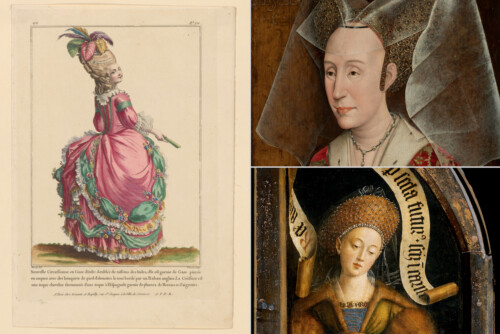There was a hiatus in our relationship, initiated by Carolyn, whose reasons and timing – in the midst of scheduling the dissertation defense of a student we continued to advise after we’d both left Columbia – I never entirely understood and never pursued. Was her abrupt silence due to her feelings of responsibility for the way my career had been derailed by my tenure decision? To what extent was the fact that I was – by virtue of having a child and no job – an unemployed mother responsible for the discontinuation of our correspondence? I suspect now that the long silence was due, quite simply, to her having, for several years, nothing to say to someone who, living on another continent and writing a book that wasn’t about Hawthorne, had no perceptible connection with the parameters of her own world. The silence was terminated one day by an email that began, “This is Carolyn Heilbrun. Remember me?” Only the “remember me” suggested that she, too, realized how long the silence had been; the rest of the message casually detailed plans for a trip to Berlin on which she was hoping I could accompany her. I couldn’t. But we did meet in New York later that summer.
We met near the Museum of Natural History, in an Italian restaurant where we’d had many fine dinners together. The geographical connection to the past made it clear that the affection was there, the desire to (re)connect. And to some extent we did. I think she wanted to be persuaded that neither Germany nor motherhood had changed me, that I was the same person I had been when we were colleagues at Columbia. I think I was able to reassure her. But, at the same time, I think she came to realize that I had never been the person she’d thought I was: the evening (our last together) was punctuated with her remark that she had “never met anyone who was so different from [herself].” But she refused to specify the nature of the difference. I suspect she was referring to several things: what she took to be my casual sociability; my apparent ability to survive what can only be called an asymptotic relation to the plot of academic success; whatever my ‘Europeanness’ meant to her. But what puzzles me more than what the substance of this difference might have been is what the point of this preoccupation with “difference” was, since it seems to have been a hallmark of her relations with others as well. (Mary Ann Caws writes, “She liked walking with me, she said, because my mind was so different from hers, my readings different, my attitudes different. You like the complex, she would say; I like the straightforward. But reading her straightforwardness was never an easy affair . . ..”) To me, it seemed as though Carolyn was erecting a barrier where none needed to exist. The gesture first, of reinitiating contact and then calling the terms of that contact into question seems, in sad retrospect, a deliberate (although perhaps not conscious) emptying out of a vessel that one has lovingly filled with a precious substance. (That she considered the substance to be precious became clear when, a week later, I received a copy of The Last Gift of Time whose inscription I cherish.) Did she try on connection, only to discover that it too uncomfortable a fit?
This pattern of approach and retreat is, of course, consummated in suicide; through her act of self-removal, Carolyn created a community of grief and anger. Had she rehearsed this gesture with the public act of leaving Columbia? At the time, it seemed a brilliant move, through which Carolyn wrested control of a situation that had mandated her powerlessness. She claimed to thrive “in the world” outside the academy and must have been aware of how her leaving academia revised the script for our community. With the liberation, however, came the potential for isolation – the other side of her much-cherished solitude – whose fearsomeness she documents in the tale of Jim’s arrival on that bleak first night in the new house. I know that she thrived on her regular, appointments with her dear friends, but perhaps the rest of connection – people at large – became more difficult.
When I first introduced Carolyn to my late, wonderful dog, Mats, she spent long enough for us to miss our restaurant reservation throwing what she dubbed his “fucking rag” and applauding the inveteracy with which he brought it back to her. I’d seldom seen Carolyn so relaxed and elated as in this stupid but endlessly gratifying game of canine “fort da.” I thus rejoiced when Carolyn adopted Bianca; the dogged affection she describes in The Last Gift of Time is the perfect accompaniment to solitude, the antidote to isolation: one is never alone when one is alone. When, at our last meeting, Carolyn told me of Bianca’s death, I sensed her loss of a unique and magical connection. Something more than a dog had been lost. Perhaps it was, already, Carolyn.
Works Cited
Hawthorne, Nathaniel. The Scarlet Letter in Nathaniel Hawthorne: Collected Novels. Ed. Millicent Bell. New York: Library of America, 1983. 115-346.
——–. The Marble Faun in Nathaniel Hawthorne: Collected Novels. Ed. Millicent Bell. New York: Library of America, 1983. 849-1242.
Heilbrun, Carolyn. The Last Gift of Time: Life beyond Sixty. New York: Ballantine, 1998.



